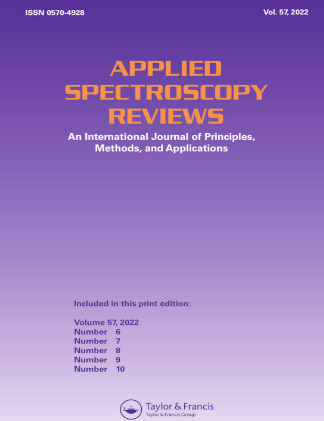FTIR光谱学在生物医学研究中的应用:如何最大限度地发挥其潜力
IF 5.4
2区 化学
Q1 INSTRUMENTS & INSTRUMENTATION
引用次数: 15
摘要
傅里叶变换红外光谱(FTIR),特别是ATR-FTIR,是一种广泛使用的技术,可以在很短的时间内筛选生物样品并识别其特定的光谱特征,是临床诊断和生物标志物发现的重要工具。FTIR光谱用于筛选细胞、组织和生物液体,并已在生物医学中实施,主要是在临床前环境中。虽然实验过程容易实现,但样品制备、光谱采集参数的定义和光谱分析是获得可靠和可重复性结果的关键步骤。然而,光谱分析实验条件的选择对研究人员来说可能是一项困难的任务,因为信息是分散的,而且往往是以经验和不准确的方式做出选择。本文收集和总结了FTIR在临床前和临床环境中的研究,旨在整理生物样品FTIR光谱研究的信息,并提出一些指导方针。这将有助于新用户准备用于FTIR分析的样品,了解正确执行光谱预处理、预处理和统计分析的关键步骤,并实施适当的、基于证据的实验设计。本文章由计算机程序翻译,如有差异,请以英文原文为准。
FTIR spectroscopy in biomedical research: how to get the most out of its potential
Abstract Fourier Transform Infrared (FTIR) Spectroscopy, in particular ATR-FTIR, is a widely used technique that allows, in a very short time, to screen biological samples and to identify its specific spectral signature, being an important tool for clinical diagnosis and biomarker discovery. FTIR spectroscopy is used to screen cells, tissues and biofluids and is already implemented in biomedicine, mainly in pre-clinical setting. Although the experimental procedure is easy to implement, sample preparation, definition of spectra acquisition parameters and spectral analysis are crucial steps to obtain reliable and reproducible results. However, the selection of experimental conditions for spectral analysis can be a difficult task for researchers because the information is dispersed and often the choice is made in an empirical and inaccurate way. This review gathers and summarizes studies using FTIR in pre-clinical and clinical setting and aims to systematize information and propose some guidelines for FTIR spectroscopy studies of biological samples. This will help new users to prepare samples for FTIR analysis and understand the critical steps to correctly perform spectra pretreatment, preprocessing and statistical analysis and to implement appropriate and evidence-based experimental designs.
求助全文
通过发布文献求助,成功后即可免费获取论文全文。
去求助
来源期刊

Applied Spectroscopy Reviews
工程技术-光谱学
CiteScore
13.80
自引率
1.60%
发文量
23
审稿时长
1 months
期刊介绍:
Applied Spectroscopy Reviews provides the latest information on the principles, methods, and applications of all the diverse branches of spectroscopy, from X-ray, infrared, Raman, atomic absorption, and ESR to microwave, mass, NQR, NMR, and ICP. This international, single-source journal presents discussions that relate physical concepts to chemical applications for chemists, physicists, and other scientists using spectroscopic techniques.
 求助内容:
求助内容: 应助结果提醒方式:
应助结果提醒方式:


